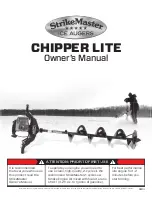
Alarm Conditions
Various parameters can be set in the controller, and when these parameters are met, the controller
detects an alarm condition and sets off an alarm.
Temperature alarms
When the average room temperature exceeds the high temperature alarm setting, a high temperature
alarm is set off. When the average room temperature decreases below the low temperature alarm setting,
a low temperature alarm is set off. Although these settings are entered by the user as absolute values,
they are defined based on the room set point. They are thus automatically adjusted if the set point
changes.
The situation is slightly different when the outside temperature is greater than the room set point. In this
case, the outside temperature becomes the reference point (instead of using the set point as a the refer-
ence). This means an alarm is set off when the room temperature reaches Outside Tempe High
Alarm Offset (the offset being the difference between the high alarm temperature setting and the set
point). A third parameter, called the Critical Temperature, is defined to continue monitoring the indoor tem-
perature for high temperatures. When the indoor temperature reaches the critical high temperature
(defined as an absolute value), an alarm is set off.
Temperature alarms in clean mode
The controller can monitor low temperature alarms when it is in clean mode. If this alarm condition is
used, the controller sounds an alarm when the temperature falls below low alarm limit that is associated
to the clean mode.
The low alarm limit used in clean mode is related to the clean mode set point; this means the alarm limit is
automatically adjusted when the clean mode set point changes.
Static pressure alarms
The controller can sound an alarm when the static pressure (SP) level exceeds high or low pressure
limits for a certain period of time.
Water spill alarm
A water spill alarm is triggered when the water consumption exceeds a user-defined amount of water
within a 15-minute delay. This alarm limit ranges from 0 to 10,000 gallons (or liters) per 15 minutes.
The alarm will stay ON for 15 to 30 minutes after a water spill situation is resolved. This is the time it takes
for the controller to gather the new consumption values required to restart monitoring water spill alarms
properly.
Water consumption alarms
When the percent difference in water consumption between the last 24-hour period and the previous 24-
hour period is greater than a given maximum value, an alarm is set off.
The high and low water consumption alarm limits are defined as follows:
66
890-00081
Expert VT-110
Summary of Contents for Expert VT-110
Page 1: ...Expert VT 110 User Manual 890 00081 Version 24 REV 19...
Page 6: ...NOTES 6 890 00081 Expert VT 110...
Page 10: ...NOTES 10 890 00081 Expert VT 110...
Page 12: ...NOTES 12 890 00081 Expert VT 110...
Page 22: ...NOTES 22 890 00081 Expert VT 110...
Page 26: ...NOTES 26 890 00081 Expert VT 110...
Page 32: ...NOTES 32 890 00081 Expert VT 110...
Page 46: ...NOTES 46 890 00081 Expert VT 110...
Page 50: ...Chapter 13 Stir Fan 50 890 00081 Expert VT 110...
Page 52: ...NOTES 52 890 00081 Expert VT 110...
Page 64: ...NOTES 64 890 00081 Expert VT 110...
Page 76: ...NOTES 76 890 00081 Expert VT 110...
Page 78: ...NOTES 78 890 00081 Expert VT 110...
Page 79: ...A Worksheets 890 00081 Expert VT 110 79...
Page 80: ...Appendix A Worksheets 80 890 00081 Expert VT 110...
Page 81: ...Appendix A Worksheets 890 00081 Expert VT 110 81...
















































